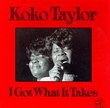| All Artists: Koji Okazaki, Kalman Berkes, Tomoko Takashima, Carl Stamitz, Budapest Nicolaus Esterhazy Sinfonia Title: Stamitz: Clarinet Concertos 1 Members Wishing: 0 Total Copies: 0 Label: Naxos Release Date: 10/5/2000 Genre: Classical Styles: Chamber Music, Forms & Genres, Concertos, Historical Periods, Classical (c.1770-1830), Instruments, Reeds & Winds Number of Discs: 1 SwapaCD Credits: 1 UPC: 730099458429 |
Search - Koji Okazaki, Kalman Berkes, Tomoko Takashima :: Stamitz: Clarinet Concertos 1
 | Koji Okazaki, Kalman Berkes, Tomoko Takashima Stamitz: Clarinet Concertos 1 Genre: Classical
|
Larger Image |
CD DetailsSimilar CDs
|
CD ReviewsGreat deal! 07/10/2001 (5 out of 5 stars) "Stamitz's concerti are prime example of music of his time. On this CD, most of the selections are played very well. I bought this CD to use as a model for myself and my clarinet students who are playing Stamitz's concerto, and you cant beat the price! The only thing I thought could've been focused on a bit more would be the interpretation and articulation choices in the first movement of the double concerto, at times they didn't match. Overall, an excellent representation of Stamitz." Tear Down the Idols! Giordano Bruno | Wherever I am, I am. | 10/08/2009 (5 out of 5 stars) "Uh, well... let's be cautious! When the idol is a work of sublime craft and beauty, it's probably wiser not to tear it down but rather to look behind it. The idol in question is Mozart's Clarinet Concerto K 622, his last and best composition for any wind instrument, the Rubicon that any clarinetist has to cross to gain a career. It's likely to be the only clarinet concerto that most CD-buyers ever consider, and the only one most audiences ever hear. But there are others, both earlier and later. The four by Louis Spohr (1784-1859), plainly influenced by Mozart's, are superb pieces of music. If you hear them and dismiss them as minor works in comparison to the Master's, your ears are pulling your leg. You're like the museum-goer who peers at the painter's name before gaping at the canvas. Likewise Carl Stamitz (1745-1801). Before there was Mozart, there was Stamitz. In the case of the Clarinet Concerto, long before! Stamitz, the worthiest composer of the "Mannheim" school, wrote at least eleven clarinet concertos around 1771, using various newly-improved models of clarinet in various keys. He was no doubt stimulated by the prowess of his friend and colleague-in-performance Johann Joseph Beer, a clarinetist from Bohemia whom Stamitz met in Paris. It was an era in which instrumentalists often were their own instrument builders or modifiers; Beer's capabilities of clarinets of his own shaping were strong determinants of the kind of music Stamitz wrote for him to perform. The Concerto #1, on this CD, was originally composed for a clarinet in C rather than the modern B-flat or E-flat forms. The second piece on this CD, the Double Concerto, was clearly conceived for two clarinets - as it's performed here - but was probably debuted in Paris with Beer on clarinet and Stamitz himself on violin or viola. The Concerto for Clarinet and Bassoon sounds like a more mature composition but still was unquestionably written before 1780. None of the clarinets of Stamitz's or Mozart's acquaintance would have looked much like the modern orchestral clarinet, with its dazzling array of silvery keys squiggling all along its ebony body, but the distinctive haunting timbre of the clarinet was already established. From Stamitz to Mozart to Weber to Spohr, this would be the golden age of the instrument, when composers made the most loving use of its melodic beauty. This CD is volume one of two CDs of Stamitz, performed by the same ensemble - Kálmán Berkes, clarinetist and director, with the Nicolaus Esterházy Sinfonia. The second CD features four of Stamitz's concertos for solo clarinet (#s 7,8,11 &10). If all these concertos sound a good deal like Mozart's, remember that Wolfgang had certainly heard Carl before Carl heard Wolfgang. Mozart didn't invent "Mozart", you know. Mozart wrote in a musical idiom constructed and honed by a generation of composers who had in turn inherited a fluent musical language from the baroque. In Stamitz's work, you'll hear the familiar 'cirque du soleil' dives from upper to lower registers, the 'forest-by-moonlight' strolls through the lowest notes of the instrument, the subtle contasting of tone colors between the orchestra and the calmly introspective clarinet. Frankly, I hear movements in Stamitz's eleven concerti that are as fine as the first or third of Mozart's one, though the adagio of Mozart's single masterpiece is so breathtaking that I could wish Wolfgang had written another ten! Bérkés is a Hungarian. If I'm not hallucinating, I can hear Hungary in his tone, which is open and vibrant and brash, like the clarinet styles of Balkan, Greek, and Klezmer folk music. The chalumeau/clarinet family of instruments probably evolved from Eastern European roots; it certainly emerged as a significant instrument first in the Austro-Hungarian musical world. Anyway, Bérkés is a vigorous player, whose tone seldom falters. The same can be said of his sinfonia; they play with energy and joy, and almost sound like a HIP ensemble at times. The two clarinets in the Double Concerto could show a trifle more sensitivity to each other's phrasing, if that wouldn't be asking too much. But the bassoon used for the Concerto in B-flat minor should be sold for firewood; it has a cachectic, borborygmic timbre that bawls for a performance on original 18th C instruments. Otherwise these two CDs are highly enjoyable, the sort of music you can listen to attentively or simply play in the background of your cheerful daily life." Good Clarinet CD R. Howell | 02/04/2009 (4 out of 5 stars) "I own lots of clarinet CDs and for a budget brand this one is good for the collector."
|

 Track Listings (9) - Disc #1
Track Listings (9) - Disc #1

